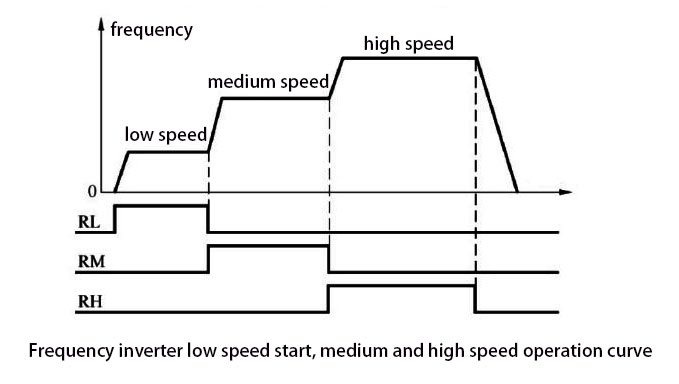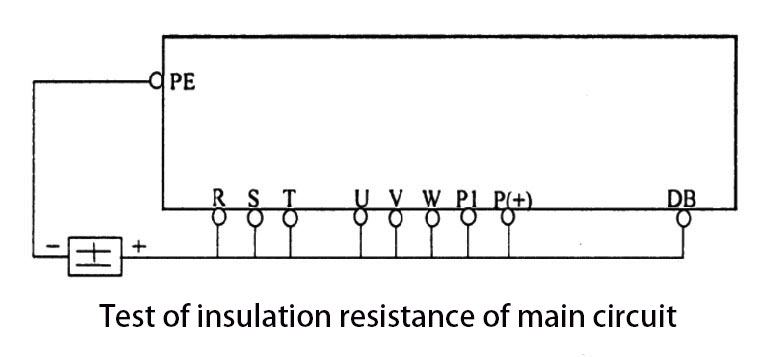Frequency inverter is an important power regulation device in the field of industrial automation, which is used to change the frequency of the power supply, to realize the speed regulation of the motor. To ensure that the frequency inverter works properly, system testing and debugging must be carried out. In this article, Inverter shop will introduce how to test frequency inverters in detail, including the preparation before testing, basic testing steps, common troubleshooting, and so on, to help users understand and apply frequency inverters more comprehensively.
Preparation Before Testing
Before testing the frequency inverter, adequate preparation must be carried out to ensure the accuracy and safety of the test.
- Safety Check: Before testing, first ensure the safety of the testing environment. Check the power cables, motor connections, and other electrical components to ensure that there are no short circuits, poor contacts, and other safety hazards. At the same time, wear protective equipment to ensure personal safety.
- Equipment Inspection: Check the frequency inverter and related equipment to ensure the integrity of the equipment. Check whether the power lines, control lines, sensors, and other connections are firm to ensure the normal power supply and signal transmission of the equipment.
- Software Preparation: Check the control software of the frequency inverter to ensure that the software version is correct and the parameter settings are consistent with the actual demand. If necessary, carry out software updates and calibration.
Basic Test Steps
Before starting the test, make sure all the equipment is in a normal state. First, start the high precision frequency inverter through the external control panel or remote control software. During the startup process, observe whether there are any abnormal sounds or odors. Carry out the no-load running test, i.e. gradually increase the output frequency inverter under no load. Observe the starting process of the motor and make sure that the motor starts smoothly without abnormal sound and vibration. After determining that the motor can run normally with no load, gradually load the load and observe the response of the motor. Test the performance of the frequency inverter under different loads by gradually increasing the load to ensure that the motor can run smoothly.
After making sure that the frequency inverter operates normally under partial loads, carry out the full-load operation test. Gradually increase the load and observe the working condition of the motor. Under full load, test the stability and output performance of the frequency inverter. For applications requiring precise torque control, conduct torque control tests. Adjust the frequency inverter parameters and observe the response of the motor under different torque requirements. Through testing, ensure that the frequency inverter can meet the demand for precise torque control. Simulate some possible faults, such as sudden power interruption, sensor failure, etc., to observe the response-ability of the frequency inverter. Through the fault simulation test, the stability and reliability of the frequency inverter under abnormal conditions can be assessed.

Common Troubleshooting
During the testing process, some faults may occur and need to be eliminated in time to ensure the normal operation of the equipment. When a malfunction occurs in the frequency inverter, the corresponding fault code is usually displayed. Find and parse the meaning of the fault codes through the manual or online resources to more accurately locate the problem. Check that power cords, control cords, and sensors are connected correctly. Loose, poor, or short-circuited connections can cause the frequency inverter to malfunction, so check and fix electrical connection problems promptly.
Frequency inverters generate a certain amount of heat when they work, and the normal operation of the cooling system is crucial to keeping the temperature of the equipment stable. Check components such as heat sinks and fans to ensure that the heat dissipation system operates well. According to the test results, it may be necessary to adjust the software parameters of the frequency inverter. Through the frequency inverter control software, modify the output frequency, current limit, and other parameters to optimize the performance of the equipment. If the fault cannot be solved, promptly seek help from the frequency inverter manufacturer or professional technical support. Manufacturers usually provide online support or on-site service, which can solve the problem more quickly and effectively.

Performance Evaluation and Optimization
- Performance Evaluation: Evaluate the performance of the frequency inverter under different working conditions according to the test results. This includes evaluation of start-up time, torque response, stability, etc. to ensure that the equipment meets the requirements of the actual application. Through testing and troubleshooting, the performance of the frequency inverter can be evaluated and some optimization work can be carried out.
- Parameter Optimization: Optimize the parameter settings of the frequency inverter according to the performance assessment results. Adjust the output frequency, current limit, and other parameters to get better performance and energy efficiency.
- Energy Saving Measures: For the energy consumption of the frequency inverter, energy saving can be achieved using adjusting the working mode, optimizing the control strategy, and other means. Reasonable use of excellent frequency inverters can not only improve the stability of the system but also reduce the cost of energy consumption.
- Precautions and Maintenance: After completing the test, it is recommended to regularly maintain the frequency inverter. Cleaning the fan, checking the radiator, tightening the screws and other work can effectively extend the life of the equipment. After normal operation of the equipment, continuous monitoring is recommended. Use the monitoring function that comes with the frequency inverter to keep abreast of the operating status of the equipment, and discover potential problems and deal with them promptly.
Through the introduction of this article, users can have a more detailed understanding of the testing and commissioning of frequency inverters. When testing the frequency inverter, adequate preparation, detailed testing steps, and timely troubleshooting are the keys to ensuring the normal operation of the equipment. We hope that the information provided by the Inverter shop will be helpful to users in the field of industrial control and automation in practical applications.
